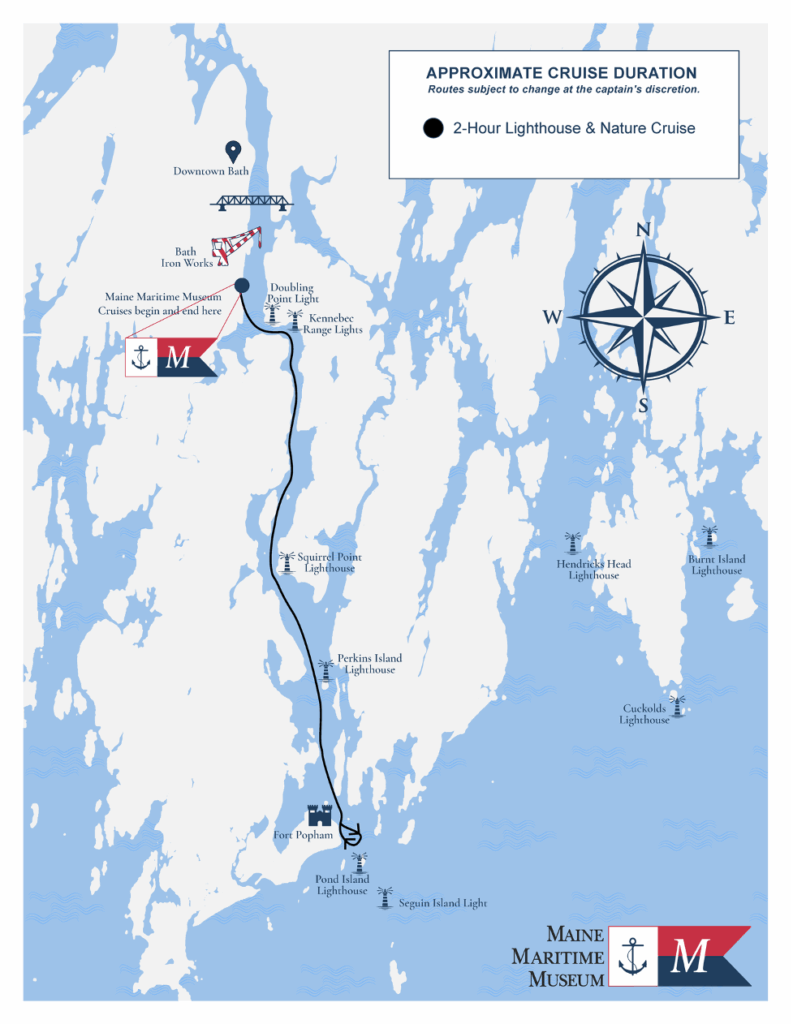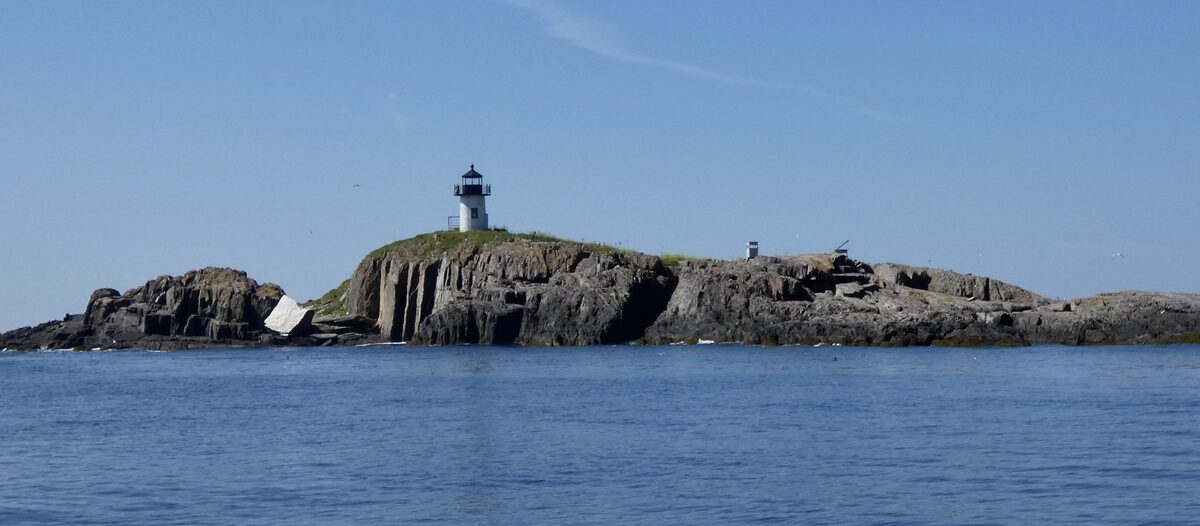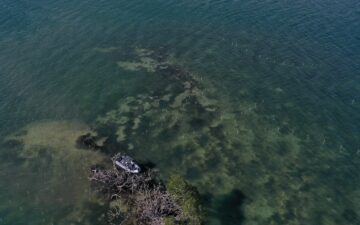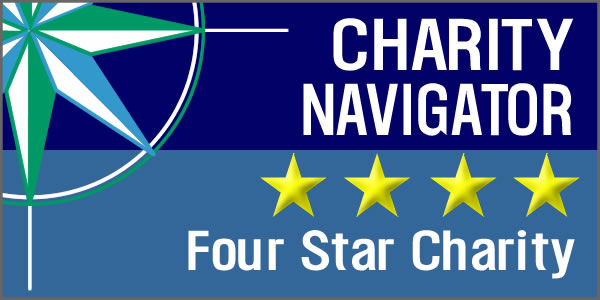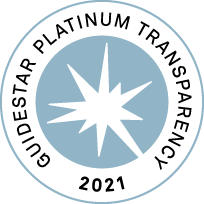Steadfast, serene, immovable, the same
Year after year, through all the silent night-Henry Wadsworth Longfellow
Lighthouses have their own enduring attraction. For those who come from the sea, it is a beacon of safe passage to port, a connection to those on land who wait. For those who are on land, it is inspiration, comfort, and a connection to the ocean in all its moods.
National Lighthouse Day is celebrated on August 7th. This weekend in Maine, it is Open Lighthouse Day—a day to visit many of the 65+ standing lighthouses in the state. There are more than twenty lighthouses within a dozen miles of me as I write.
I am lucky to live on an island that is home to three lighthouses. Each of them is a key part of navigating the waters of the Kennebec River for the 11 miles from the Atlantic Ocean up to the city of Bath. Although the Coast Guard has automated the light functions and there are no longer lighthouse keepers here, the lighthouses themselves are privately owned. Each of them has its own story. Each of them is still here because of a dedicated group of volunteers willing to be part of a “Friends of” group or a national society or association dedicated to lighthouses.
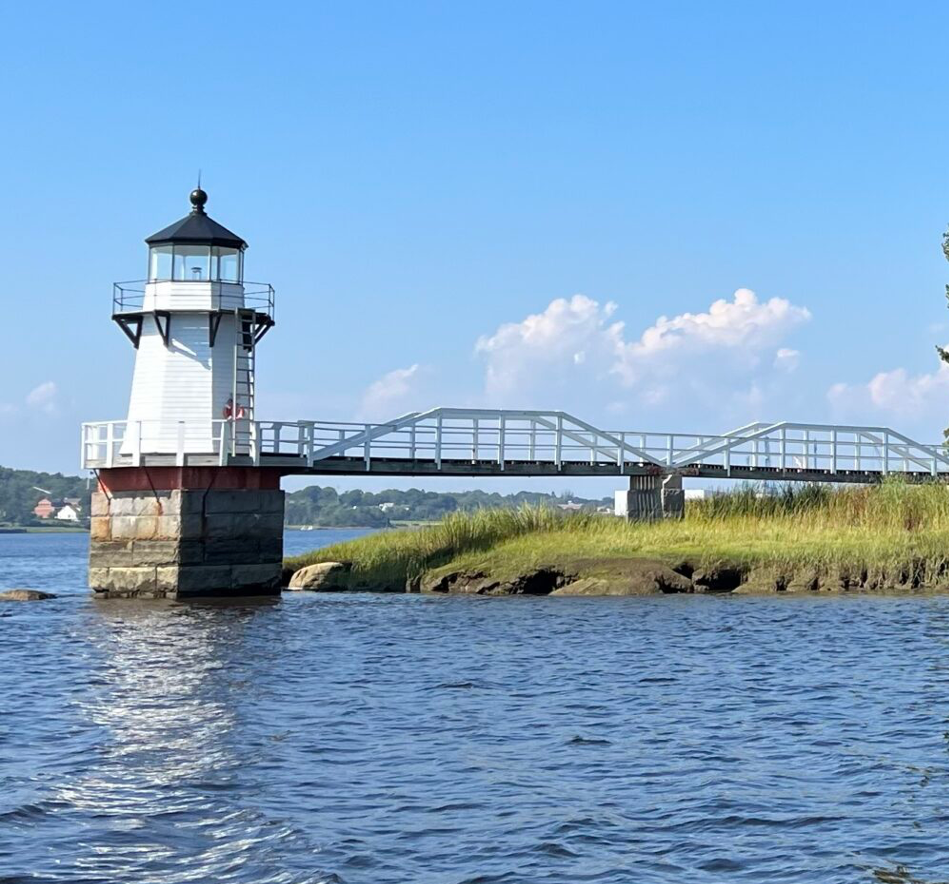
Doubling Point Lighthouse’s flashing light is a particularly comforting sight during the long nights of late fall and winter. Established on the Kennebec River in 1899, it was sited to warn mariners of two hazardous, double-bend turns as they come down the river to the sea. The Friends of Doubling Point became the stewards of the lighthouse and its property in 1998. Since the unforeseen collapse of the walkway to the Light in the fall of 2023, the property has been off-limits to visitors while the Friends have worked to raise enough money to rebuild the walkway. It is nice to report that while the Light remains closed to visitors, construction on the walkway has just begun!
The Doubling Point Range Lights (aka the Kennebec Range Lights) are key to navigating those tricky double bend turns when coming up the river from the Atlantic Ocean. Built in 1898 after Congress provided $17,000 three years earlier to light the river, the two white octagonal wooden towers adorned with a red roof are of similar design.
The lights are positioned at the end of a long, straight section of the river. One tower is located near the water, and the other is 235 yards further inland and is slightly elevated. As long as mariners keep the two lights positioned one above the other as they steer their vessel, they are certain to be in the center of the channel. For a vessel coming upstream near the Range Lights, the river makes a 90° turn to the west, and then after a half mile another 90° to resume its course north – hence the name Doubling Point.
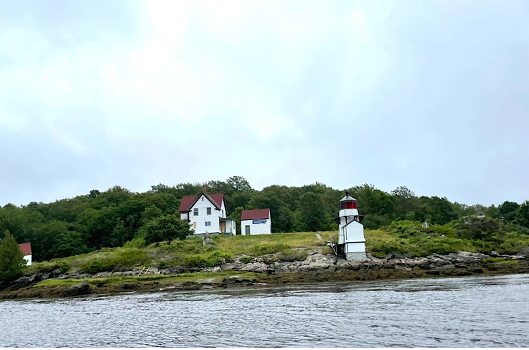
Squirrel Point Lighthouse sits on the southwest corner of Arrowsic Island. In 1895, then-President Grover Cleveland appropriated $4,650 to commission the Squirrel Point site and construct the light tower, keeper’s dwelling, and barn. The Citizens for Squirrel Point have been designated as its stewards by the US Coast Guard. In August, they celebrated the installation of a new metal bridge that is higher and better suited to withstanding the rising sea level and changing storm patterns that had devastated the old wooden bridge. Like their counterparts who serve as stewards of other lighthouses, the group has returned to addressing the priority needs of the lighthouse tower and its supporting buildings.
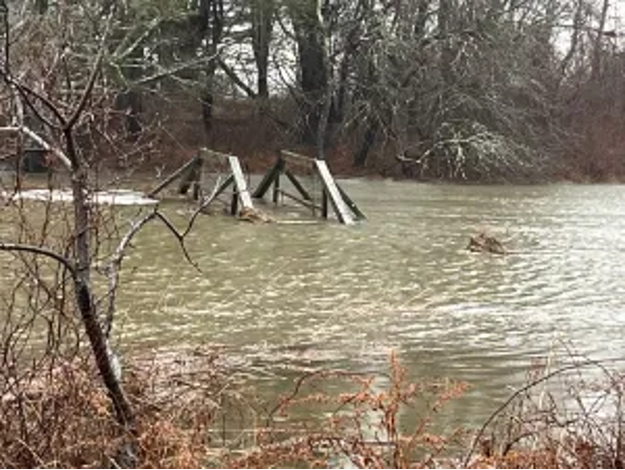
Lighthouses are by definition built in places that are vulnerable to wind, rain, storm surge, and other events. Rising sea levels and increasingly intense storms have only made the challenge of maintaining these historic structures that much greater. As a historical, cultural, and maritime heritage, their upkeep means so much more than the bottom line—and our global lighthouse treasures are woefully underfunded.
I am looking forward to meeting with lighthouse stewards and advocates from around the world in October. It is always nice to connect my local experience with the expertise of others and to share a common goal: To protect the lighthouses and other aids to navigation that, even in this age of satellites, GPS, and other technology, are the reliable beacons that ensure that those at sea can make their way to port.
